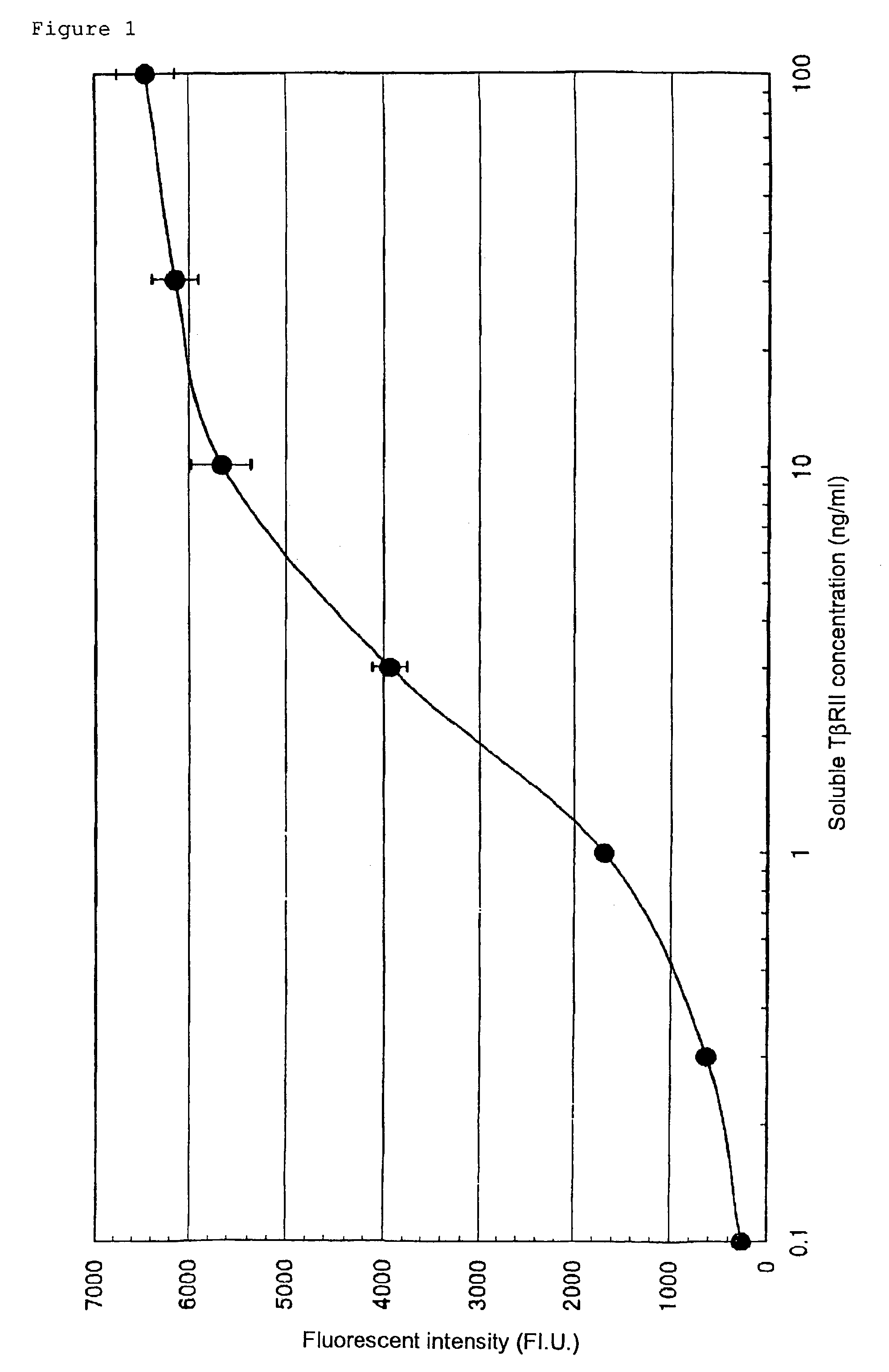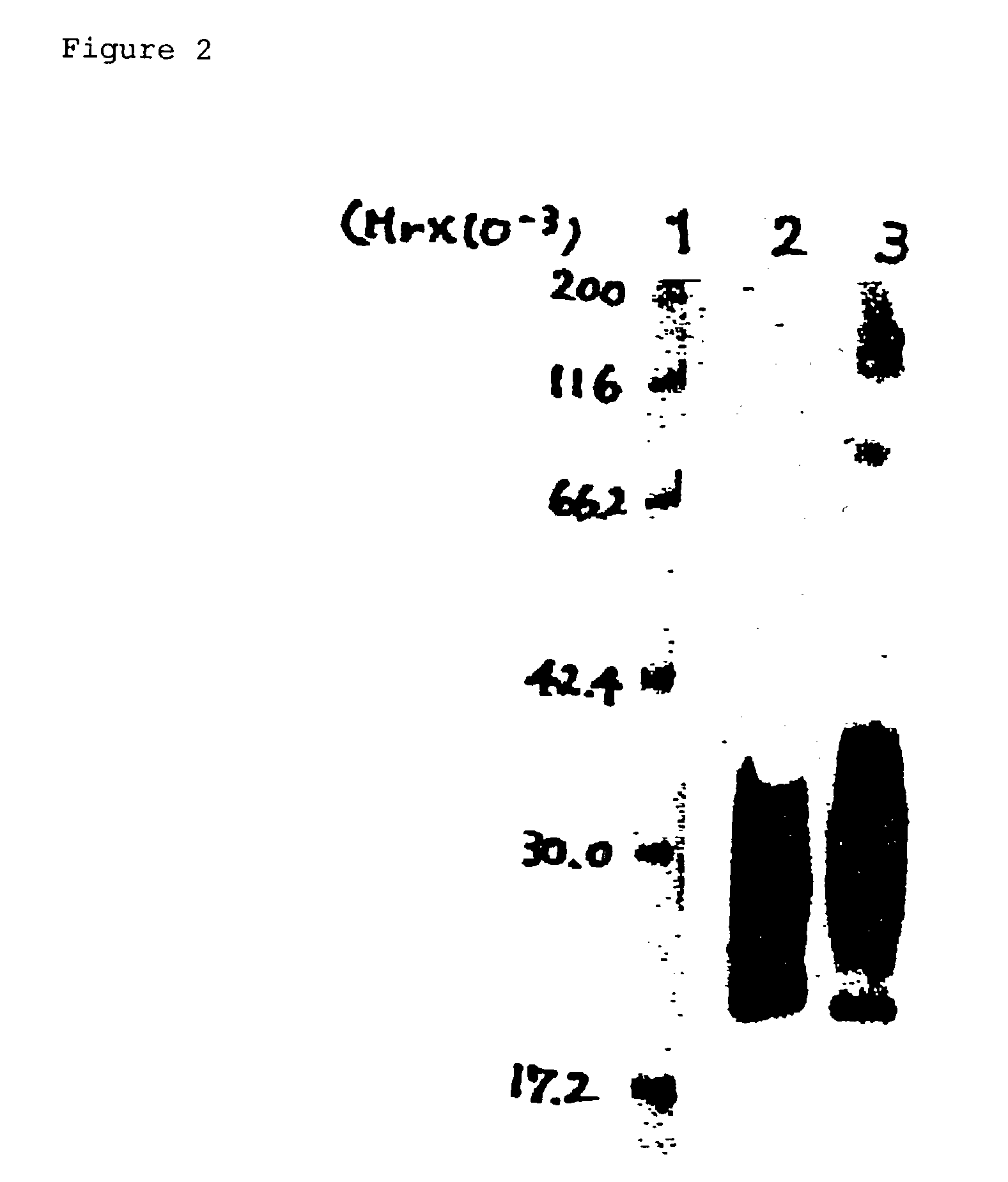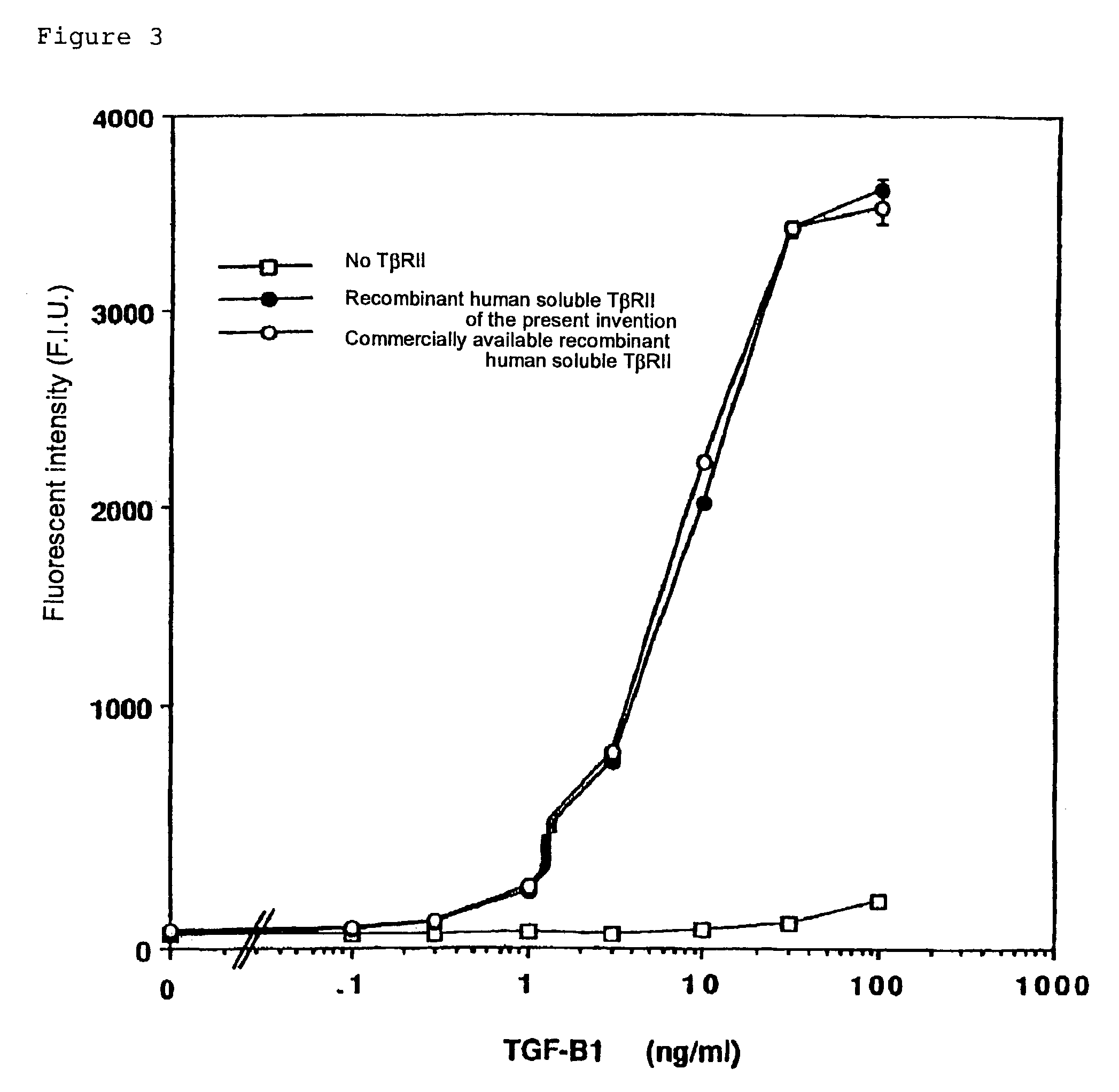Human monoclonal antibody against TGF-beta type II receptor and medicinal use thereof
a human monoclonal antibody and receptor technology, applied in the field of human monoclonal antibody against tgfbeta type ii receptor, can solve problems such as morbid state, achieve the effects of reducing the production of extracellular matrix, reducing the amount of protein, and reducing the level of serum creatinin
- Summary
- Abstract
- Description
- Claims
- Application Information
AI Technical Summary
Benefits of technology
Problems solved by technology
Method used
Image
Examples
example 1
Establishment of a Quantitative Method with Sandwich ELISA for Human Soluble TβRII
Establishment of a Sandwich ELISA System to Quantify Soluble Recombinant Human TβRII
[0268]Goat anti-human TβRII polyclonal antibody (R&D) was diluted with phosphate buffer, and added to each well of a 96-well ELISA microplate (Corning) at a concentration of 0.1 μg / 50 μl / well. The plate was incubated at room temperature for one hour to allow adsorption of the polyclonal antibody.
[0269]The plate was washed with phosphate buffer, and then phosphate buffer containing 3% bovine serum albumin (BSA) was added to each well (200 μl / well). The plate was incubated at room temperature for two hours to block the antibody-free space on the well surface of the plate. Then, the plate was washed three times with phosphate buffer.
[0270]The assay sample was added to each well of the antibody-immobilized microplate (50 μl / well), and the plate was incubated at room temperature for one hour. Then, the microplate was washed...
example 2
Preparation of Soluble Recombinant Human TβRII
[0276]The cDNA (SEQ ID NO: 1) encoding the extracellular domain of human TβRII (the amino acid sequence from residue 1 to residue 159; SEQ ID NO: 2) was prepared by PCR according to a conventional method.
[0277]Specifically, the cDNA was synthesized by PCR according to a conventional method using cDNA prepared from mRNA obtained from human kidney as a template, and primers designed based on human TβRII cDNA (Cell, Vol. 68, p. 775-758, 1992; GenBank Accession No: M85079).
[0278]The human TβRII cDNA so prepared containing the coding region was inserted into plasmid pEF-BOS (Unexamined Published Japanese Patent Application No. (JP-A) Hei 2-242687) to prepare an expression vector. The human kidney-derived fibroblast cell line HEK293 (ATCC CRL-1573) was transformed with the vector by electroporation. The transformed cells were cultured in the serum-free medium ASF104 (Ajinomoto) for four days to transiently express the soluble recombinant human...
example 3
Test on the Binding Activity of the Purified Human TβRII to TGF-β1
[0281]The binding activity of the purified soluble human TβRII prepared in Example 2 to human TGF-β1 was tested as follows.
[0282]The soluble recombinant human TβRII was added to each well (0.2 μg / well) of a 96-well ELISA microplate (Corning). The microplates were incubated at room temperature for two hours to adsorb the recombinant soluble human TβRII on the wells. Then, the supernatant was discarded, and a blocking reagent (200 μl; phosphate buffer containing 3% BSA) was added to each well. The plate was incubated at room temperature for two hours to block the TβRII-free space on the well surface of the plate. Each well was washed three times with phosphate buffer containing 0.1% Tween20 (200 μl). Thus, microplates of which wells have been coated with soluble recombinant human TβRII were prepared.
[0283]The human TGF-β1 (R&D) was added to each well at various concentrations (100, 50, 25, 12.5, 6.3, and 3.1 ng / ml), and...
PUM
| Property | Measurement | Unit |
|---|---|---|
| molecular weight | aaaaa | aaaaa |
| molecular weight | aaaaa | aaaaa |
| molecular weight | aaaaa | aaaaa |
Abstract
Description
Claims
Application Information
 Login to View More
Login to View More - R&D
- Intellectual Property
- Life Sciences
- Materials
- Tech Scout
- Unparalleled Data Quality
- Higher Quality Content
- 60% Fewer Hallucinations
Browse by: Latest US Patents, China's latest patents, Technical Efficacy Thesaurus, Application Domain, Technology Topic, Popular Technical Reports.
© 2025 PatSnap. All rights reserved.Legal|Privacy policy|Modern Slavery Act Transparency Statement|Sitemap|About US| Contact US: help@patsnap.com



